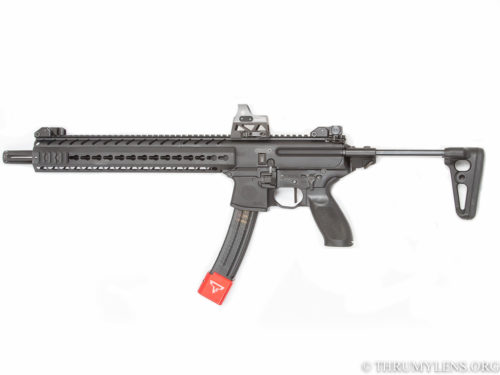 I’ve been using red dot optics on pistols and long guns for about a decade. I’ve tried many, many different models of optics – mostly from Aimpoint, but also from Leupold and Vortex. In the past year I’ve also tried several different red dot optics from SIG Sauer’s new SIG Optics division, and in each case I’ve been extrodinarily impressed. Fellow competitive shooter Alma Cole recommended I try the SIG Optics Romeo 3 on my SIG MPX indicating he really liked it. I was intrigued, but I was also reticent to change optics mid-season, so I continued to use the Aimpoint T2, and picked up a Romeo 3 at the end of the 2017 competition season.
I’ve been using red dot optics on pistols and long guns for about a decade. I’ve tried many, many different models of optics – mostly from Aimpoint, but also from Leupold and Vortex. In the past year I’ve also tried several different red dot optics from SIG Sauer’s new SIG Optics division, and in each case I’ve been extrodinarily impressed. Fellow competitive shooter Alma Cole recommended I try the SIG Optics Romeo 3 on my SIG MPX indicating he really liked it. I was intrigued, but I was also reticent to change optics mid-season, so I continued to use the Aimpoint T2, and picked up a Romeo 3 at the end of the 2017 competition season.
Here are the specifications of the SIG Romeo 3 from the SIG website:
The retail price of the Romeo 3 is listed as $479.00.
I primarily use my SIG MPX for competition – I’m a B class Pistol Caliber Carbine (PCC) competitor in USPSA, and an A Class PCC competitor in Steel Challenge, so my Aimpoint T2 has certainly served me well. But the tube-like design of the T2 is at a slight disadvantage to a reflex red dot site which provides less obstuction and a greater perceived field of view. When it comes to competition optics for open guns and PCC’s, most competitors go with something from C-More Systems, with the RTS2 being a popular choice – no “tunnel vision” target obstruction because there’s no tube to get in the way. Once I mounted my Romeo 3 and began zeroing it, I immediately saw the advantage – it’s like the sight is floating above the window with a thin border vs. looking through a tunnel. Picking up targets on either side of the optic in my field of view was much easier.
I mounted the Romeo 3 with the included raised mount, with a “quick detatch” (QD) release, and it’s really quite nice and an excellent value-add considering the competitive price of the Romeo 3. With many optics on the market, no mount is included, which adds another $50 to $100.00 to the total cost.
Zeroing the optic was simple enough, using the included allen wrench to “unlock” the horizontal and verticle adjustments, making the necessary adjustings, then “locking” it down again.
The Romeo 3 specifications list it as having a 3 MOA dot size. Many will prefer a larger size, but in my experience smaller offers more flexibility. A smaller dot size will allow for more precise shots at longer distance. But you can always bump the brightness up to effectively make the dot larger when needed – pretty close to double in size if need be. I cannot over-state how crisp and clear both the Romeo 3 glass window and dot are. Red dots on optics can appear to blume or be “blobby.” I have a fairly severe astigmatism, which is said to excacerbate this particular phenomenon. But the dot on the Romeo 3 is incredibly sharp – better than any other I’ve tried. Whether the unprecidented dot clarity is a function of the quality of the glass, the quality of the electronics that gererates the dot (or some combination of both) I cannot say. But the results are spectacular.
The rest of the features of the Romeo 3 are fairly straight forward and work the way they should. The CR2032 battery is changed via a drawer on right side of the optic – removal of the optic is NOT required as it would be with other similar optics I’ve tried in the past: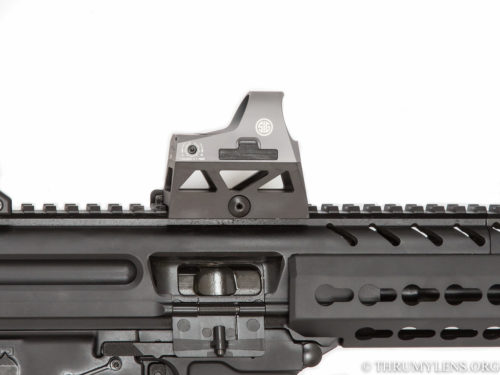
Brightness is controlled by up/down switches on the left size of the optic:
You can also turn the optic off and on via these controls, but it’s not necessary thanks to SIG Optics’s MOTAC motion sensing technology – the dot powers up when it senses movement, and turns off to save power after a period on innactivity. Optics that don’t turn themselves off drive me positively nuts, so this is a welcome feature for me.
Complaints? None really. If I had to pick nits, I’d ask for a black color option. But competition guns tend to have all sorts of crazy colors on them so not a big deal – the functional value to the device is what’s important here.
The SIG Optics division is fairly new, and as good as the optics from them I’ve tested are, they haven’t quite stood the test of time needed for me to recommend them for defensive use. However I do remain optomistic in this regard. In the short term, the Romeo 3 gets my enthusiastic recommendation for competition use on any kind of rifle or even shotgun, and I hear they’re successfully being used on Open Division pistols as well. Amazon (click here) seems to have one of the best prices out there – just $300.00.

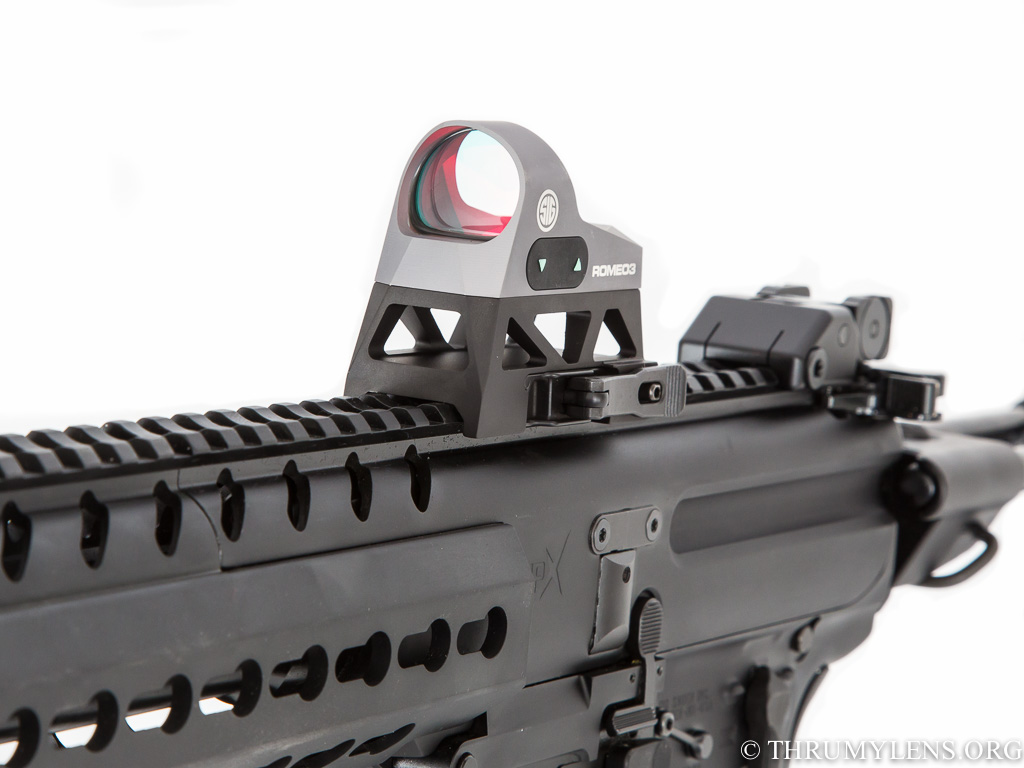
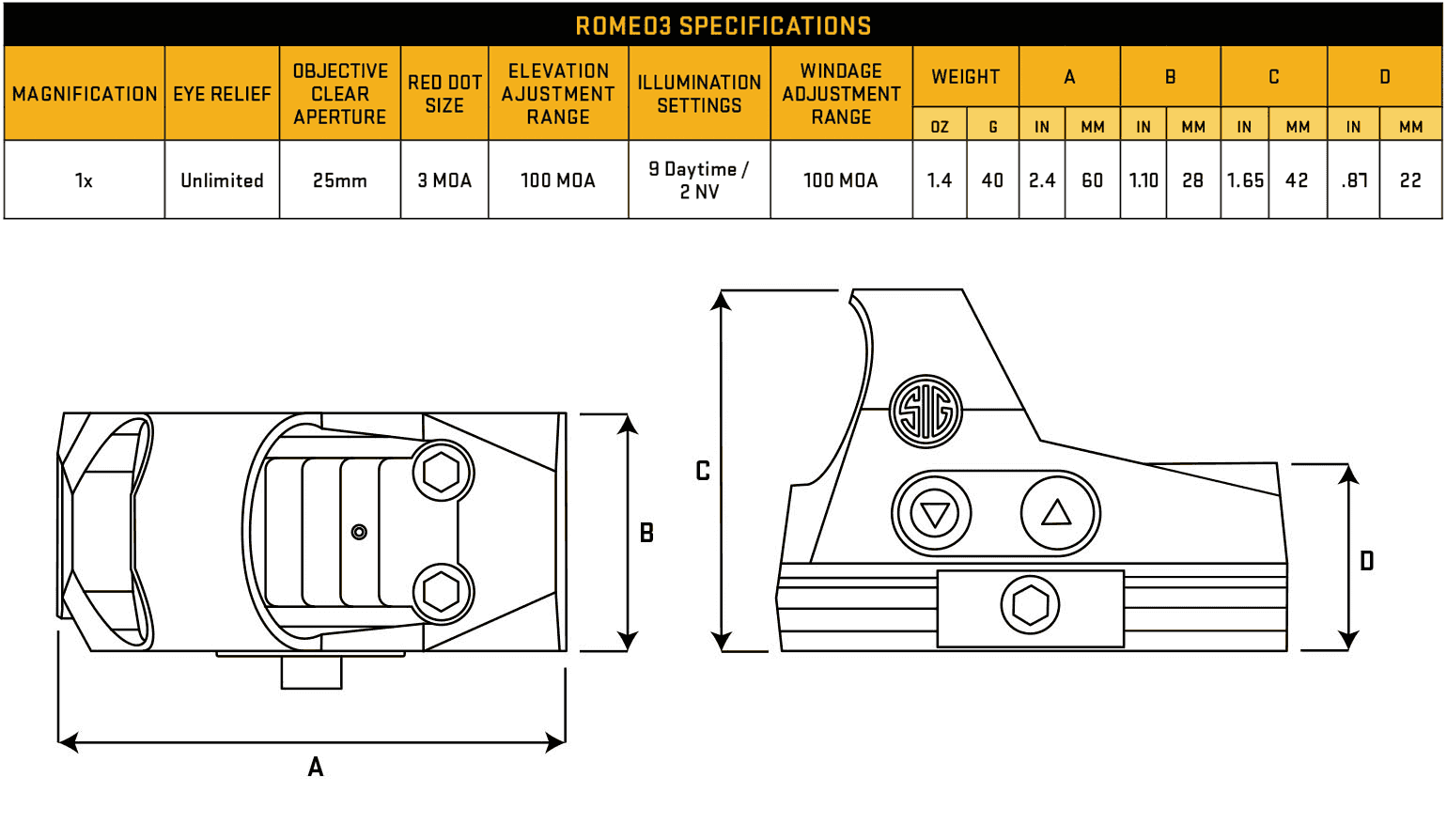
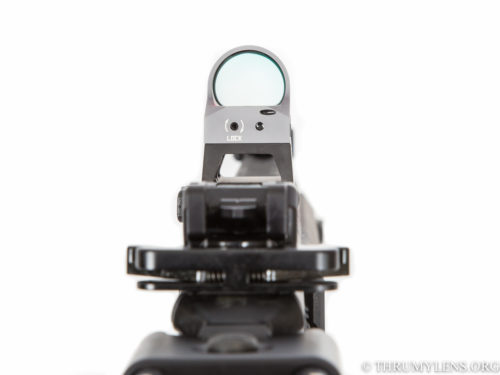
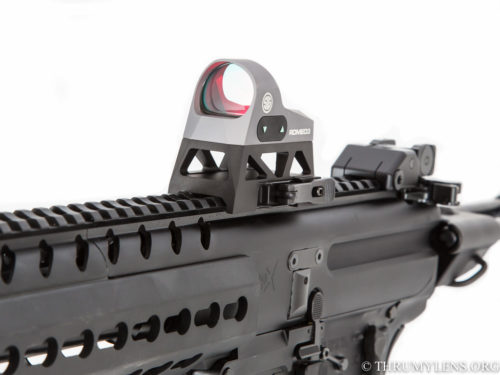
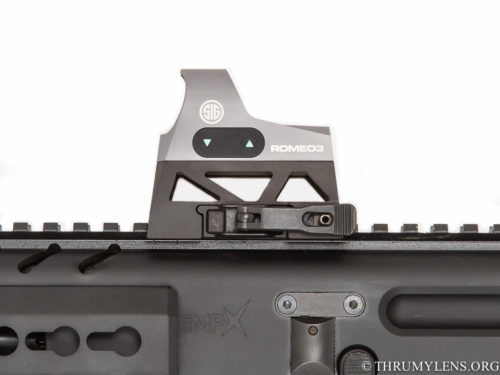
0 Comments